2007 January
About Andrew Cusack
 Writer, web designer, etc.; born in New York; educated in Argentina, Scotland, and South Africa; now based in London.
Writer, web designer, etc.; born in New York; educated in Argentina, Scotland, and South Africa; now based in London. read more
News
Blogs
Reviews & Periodicals
Arts & Design
World
France
Mitteleuropa
Knickerbockers
Argentina
The Levant
Africa
Cape of Good Hope
Netherlands
Scandinavia
Québec
India
Muscovy
Germany
Academica
The Prince of Wales in Philadelphia
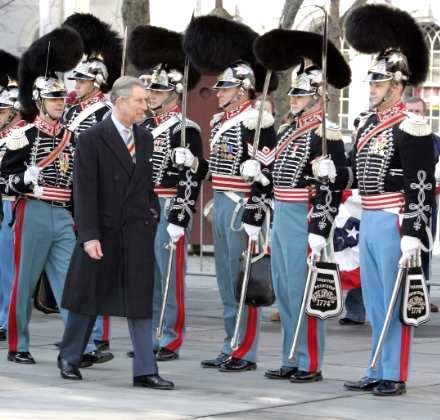
THE CITY OF PHILADELPHIA welcomed the Prince of Wales on his recent visit with a guard of honor composed of members of its most ancient military unit, the First Troop, Philadelphia City Cavalry. Organized in 1774 as the Light Horse of the City of Philadelphia, it describes itself as the “oldest continuously active military unit in service to the nation”. As an active armored cavalry troop, it forms part of the 28th Division, while as an historic and ceremonial unit it is a component of the Centennial Legion (of which my grandfather served as commander). Since the most unfortunate demise of New York’s Seventh Regiment, it probably takes the prize for swankiest unit in the States.
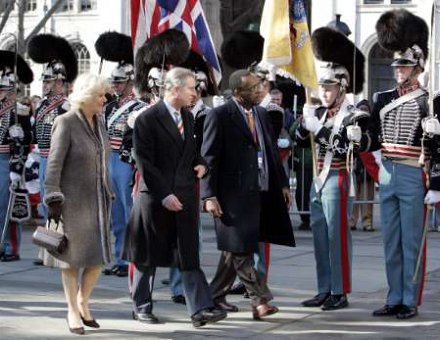
Previously: Old Dominion Will Receive Her Majesty | The Duke of York in New York | Your Royal Highness, Caed Mile Failte
A Sienese Gem Lost
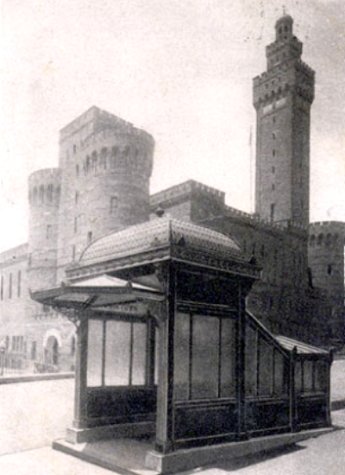
STEALING A GLANCE at the photo above, the viewer would easily be forgiven for mistaking the vista for that of a subway entrance in turn-of-the-century Siena, Italy. The proud medieval tower lurks over a comely metal-and-glass structure of continental flavor. However the city fathers of that ancient Italian municipality never deigned to erect an underground railway. The precise locus of the vista is far removed: it is the corner of Park Avenue and 33rd Street, and the building behind the subway entrance is not the town hall of Siena, but rather the armory of the 71st Regiment, New York National Guard.
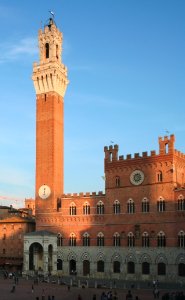 When the earlier Romanesque Revival armory of the Seventy-First Regiment burnt down in 1902, it was decided to build the new armory on the same, though slightly enlarged, site. The 1905 construction was built to the design of the architectural firm of Clinton and Russell, and was clearly inspired by the Palazzo Pubblico (the town hall, photo at right) of Siena, on that city’s Piazza de Campo. While the Seventh Regiment Armory contains the finest interiors of any military building in City, and probably the entire Empire State, the exterior of the Seventy-First’s armory was far superior. Even though the interior was not to the same lofty standard as the Seventh, it was by no means lacking, for it had all the wood-panelled rooms filled with military regalia from times gone by which one expects of New York’s armories from the period. (more…)
When the earlier Romanesque Revival armory of the Seventy-First Regiment burnt down in 1902, it was decided to build the new armory on the same, though slightly enlarged, site. The 1905 construction was built to the design of the architectural firm of Clinton and Russell, and was clearly inspired by the Palazzo Pubblico (the town hall, photo at right) of Siena, on that city’s Piazza de Campo. While the Seventh Regiment Armory contains the finest interiors of any military building in City, and probably the entire Empire State, the exterior of the Seventy-First’s armory was far superior. Even though the interior was not to the same lofty standard as the Seventh, it was by no means lacking, for it had all the wood-panelled rooms filled with military regalia from times gone by which one expects of New York’s armories from the period. (more…)
Our Walter, Rest in Peace
I was very saddened to hear this morning of the sudden death of our good and loyal friend, Walter Phelan of Brooklyn. Walter was a good man, with a heart of gold, and a brilliant mind. He taught himself the law, and passed the New York bar exams in the years before at least a year in law school was required (a development which Walter would’ve been the first to tell you was an outright racket). I have no doubt that Walter will be remembered for his numerous small kindnesses. Proud of his favorite Italian bakery, he would hand out loaves of bread from there every Sunday on the sidewalk outside St. Agnes after the 11:00 Tridentine mass. Having a gift for languages, he would often exchange a few kind words with the Polish waitress in her native tongue whenever we had lunch at Bloom’s on Lexington, and he made sure to tutor his young nephew in Latin when he discovered it wasn’t offered at school.
One of the things I liked most about Walter is that he was never afraid to have a good argument. More often than not, he and I found ourselves in agreement, but it was sometimes otherwise, such as with his firm contention that Shakespeare’s plays were actually written by the Earl of Oxford. Nonetheless, he was polite and gracious in dispute, even if outspoken. Still, he was a private man, and as a friend said of him tonight, it would probably take five of his friends who’d never known eachother to piece together the story of his life. Walter heard mass three times a day, and could often be found attending masses at St. Agnes on 43rd Street, at St. Vincent de Paul’s on 24th, and at St. George’s Ukrainian Catholic Church down on 7th Street. Earnest in his desire for the salvation of souls and their eternal repose, he never missed the monthly mass of the New York Purgatorial Society. His friends will miss him very much.
Requiem æternam dona eis, Domine, et lux perpetua luceat eis.
Requiescat in pace. Amen.
The Still Solid Spectator
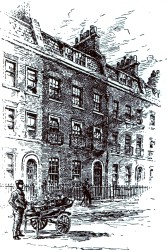 WHEN MATTHEW D’ANCONA took the helm as editor at the Spectator, worry surfaced. I had heard that he was something of a Blairite (though that is the trend amongst Tory bigwigs these days) and those worries were not allayed by the loathsome interjection in the beloved weekly of a ‘business’ section and the ambiguous ‘style and travel’ segment. These were most unwelcome changes; what would the late great Peter Simple have made of them? Nonetheless, the quality outwith those interlopers has not declined significantly, and despite the sad pleas of the Israeli ambassador, the ever-amusing Poor Little Greek Boy has not been given the boot.
WHEN MATTHEW D’ANCONA took the helm as editor at the Spectator, worry surfaced. I had heard that he was something of a Blairite (though that is the trend amongst Tory bigwigs these days) and those worries were not allayed by the loathsome interjection in the beloved weekly of a ‘business’ section and the ambiguous ‘style and travel’ segment. These were most unwelcome changes; what would the late great Peter Simple have made of them? Nonetheless, the quality outwith those interlopers has not declined significantly, and despite the sad pleas of the Israeli ambassador, the ever-amusing Poor Little Greek Boy has not been given the boot.
Nonetheless, the hopefully brief reign of that slatternly goddess Change is not yet finished, for the Spectator is moving from their legendary offices at No. 56 Doughty Street. The office, a few doors down from the home of Charles Dickens, has become reknowned for its lunches. When the Prince of Wales was invited, he specifically asked for the Poor Little Greek Boy and Jeff Barnard, but editor Charles Moore (a convert to Catholicism) declined the request. “Why not?” inquired H.R.H. “Because,” quoth Moore, “Jeff will use the F-word non-stop and the Greek boy will leak to the tabloids”. But, as Taki tells us in this week’s issue,
Doughty Street was home to the weekly for over three decades, before which it was edited from No. 99 Gower Street in Bloomsbury.
While the venerable Speccie is leaving a splendid, old building, thankfully it will not be emigrating to the dreary modernity of Canary Wharf but rather to 22 Old Queen Street in Westminster. “It’s a magnificent Georgian building, much bigger than the present one, with a beautiful garden,” d’Ancona told the Evening Standard. The garden happens to look out onto St. James Park, and so should prove quite adequate to hosting the Spectator‘s annual garden party.
Previously: Welcome to Doughty Street
King Jagiello of Poland
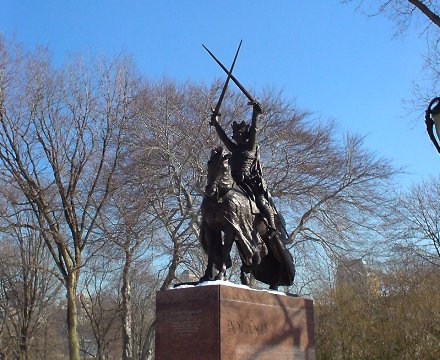
My favorite statue in Central Park is that of King Władysław II Jagiełło of Poland, by the Turtle Pond. (more…)
The Cardinal Duke of York
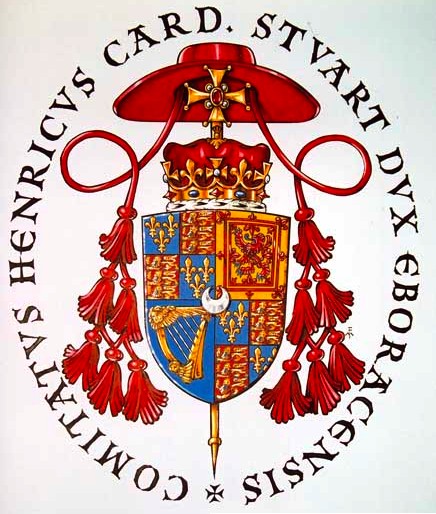
The great Marco Foppoli has designed (and very kindly passed along to me) the badge for the committee which has been assembled to commemorate the two-hundredth anniversary of the passing of the Cardinal Duke of York, or King Henry IX and I as was his style according to the Jacobite succession. I’m not entirely sure what events are being planned, but I believe there will be a conference in Rome around the anniversary in August.
The Greatest Building Never Built

LUTYENS’ SCHEME FOR the Metropolitan Cathedral of Christ the King, Liverpool is oft hailed as the greatest building to never have been built. Strictly speaking, this is not accurate, as the building was structurally finished, although not completely decorated, up to the crypt level. Nonetheless, had it been finished, the cathedral almost certainly would have been considered Sir Edwin Lutyens’ greatest work; though his hand (with Herbert Baker) in building the Indian capital of New Delhi, including the monumental Viceregal Palace, would certainly vie for the title. (more…)
A Morning’s Journey
I crossed the Harlem River into Manhattan today just as Patrick Leigh Fermor traversed the Danube in his brilliant book, A Time of Gifts, which has immediately become one of my favorite reads of all time. Settling into my seat on the train yesterday, I opened my knapsack to utter shock and surprise—I had left my reading at home. The Leigh Fermor and P.G.W.’s Cocktail Time were resting somewhere in my bedchamber while I stared into the compartment of my bag, bare but for a photocopied page from the Art Newspaper and two (already-read) issues of the Hungarian Quarterly. These are the times that try men’s souls. Getting out of the city late in the evening proved even harder, as the bridge carrying the railway over the river was actually up for once (“First time in my life, folks,” the conductor informed us), leaving a steady backlog of trains awaiting their northerly destinations.
But this morning there were no bridge-raising complications, and the sky was a delightful, clear blue (soon to change) as we entered Manhattan. Thankfully, I had my two books; a bit of Wodehouse while waiting in Bronxville station and then Paddy Leigh Fermor on the train. After crossing the river, the train stops at 125th Street (Harlem) before submerging at 96th, taking the passenger down to Grand Central, that well-kept remnant on 42nd Street, reminding us that we too were once civilized. There, after taking a stroll through the market (Nürnburger sausage! Kaiser ham! Norwegian salmon!) you switch to the subway and hop down just one express stop on the 5 train.
Just half a dozen steps after emerging from Union Square station I saw a speck of white fall from the sky, and then another, and another. So it began: the first snowfall of the year. And, I might add, a New York record for the latest snowfall. (January 10th? No, there was no white Christmas for us this year). Two children on the swings in the playground ecstatically proclaimed their approval at the opening of the heavens. Wandering through the farmer’s market in the square, I picked up an herb focaccia bread I thought might be particularly enjoyable, and it complimented the exceptionally tasty Tuscan vegetable soup I had for lunch. The snowflakes swirled above the square and fell down on all the market-goers and the folks walking on Broadway as I marched up to work. And yet, how fleeting! In the few steps from the front door to the elevator, the white snow had already melted and merged into the green of my loden coat. Very well, Mother Nature. Very well.
Argentina’s Henley
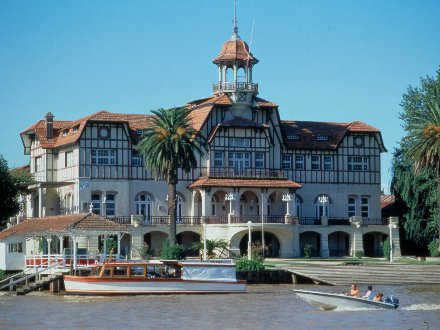
JUST NORTH OF Buenos Aires lies the city of Tigre. The city sits on the southern edge of the series of rivers, rivulets, islands, and eyots collectively known as the Parana Delta, after the Rio Parana which breaks up as it reachs the Rio de la Plata. The town’s riparian geography combined with its closeness to Buenos Aires—a mere twenty miles from the Obelisco—make Tigre a popular weekend and summertime getaway. Since the 1870s, however, it has also been the birthplace and focal point of rowing in the country—Argentina’s Henley. (more…)
A New Year
A splendid New Year’s Eve. We watched Mrs. Miniver before retiring to the living room, where I made a fire. We sat before the open flame for two hours, first with a generous helping of port then followed by a good old bottle of Veuve, with naught but a few candles, the lights of the Christmas tree, and the crackling fire to illuminate the room. It was all quite lovely.
We remembered a number of the things which had come to pass in the last year, and after we had opened the champagne (the dog grabbed the cork and was happily chewing on it beneath the dining room table) we made a few toasts. To the Queen, to the Duke of Edinburgh, to dear old Aunt Kay who passed away this year. Aunt Kay lived in numerous interesting places in the post-war period, from Nigeria where they had to deal with snakes on the verandah (or was it monkeys?) to Madrid in Spain to London where they lived in Princes Gate, right on Hyde Park. They were parishioners at the Oratory, which is why it is the first church in Britain in which I ever heard Mass (the summer after kindergarten). They had returned to the States a good number of years ago and she passed on just a few weeks ago at a ripe old age. To Gerald Ford, our late president. Then there were toasts to little Finn, my nephew, and to other friends and relations, kith and kin. I raised a glass myself to our own Tom Grant, whom we so sadly lost this year, and hoped and prayed his mother and father were baring up well. We remembered dear Cousin Marilyn, who was greatly missed at a family gathering on Saturday, God rest her soul. I will always remember the prognostications which she delivered with absolute authority. “Wallis Simpson? A man.” “You’re joking.” “A man. When she died, they only found men’s underwear.”
Eventually, we discovered that, like the proverbial thief in the night, the hour of twelve had come and the new year was upon us. A few final swigs of champagne and then a resting of eyes before the fire was extinguished and it was time to go to bed. May God in His mercy grant us all a happy, holy, and peaceful new year.
Search
Instagram: @andcusack
Click here for my Instagram photos.Most Recent Posts
- Sag Harbor Cinema March 26, 2025
- Teutonic Takeover March 10, 2025
- Katalin Bánffy-Jelen, R.I.P. March 3, 2025
- Substack Cusackiensis March 3, 2025
- In the Courts of the Lord February 13, 2025
Most Recent Comments
Book Wishlist
Monthly Archives
Categories


